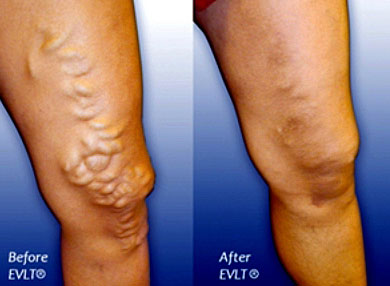Varicose veins are veins that have become enlarged and twisted. The term commonly refers to the veins on the leg, although varicose veins can occur elsewhere. Veins have pairs of leaflet valves to prevent blood from flowing backwards (retrograde flow or venous reflux). Leg muscles pump the veins to return blood to the heart (the skeletal-muscle pump), against the effects of gravity. When veins become varicose, the leaflets of the valves no longer meet properly, and the valves do not work (valvular incompetence). This allows blood to flow backwards and they enlarge even more.
Varicose veins are most common in the superficial veins of the legs, which are subject to high pressure when standing. Besides being a cosmetic problem, varicose veins can be painful, especially when standing. Severe long-standing varicose veins can lead to leg swelling, venous eczema, skin thickening (lipodermatosclerosis) and ulceration.
Life-threatening complications are uncommon, but varicose veins may be confused with deep vein thrombosis, which may be life-threatening.

Most varicose veins are reasonably benign, but severe varicosities can lead to major complications, due to the poor circulation through the affected limb.
Traditionally, varicose veins were investigated using imaging techniques only if there was a clinical suspicion of deep venous insufficiency, if they were recurrent, or if they involved the sapheno-popliteal junction. This practice is not now widely accepted. Patients with varicose veins should now be investigated using lower limbs Venous Ultrasonography (Dopplers Study).
Varicose Veins are more common in women than in men, and are linked with heredity. Other related factors are pregnancy, obesity, menopause, aging, prolonged standing, leg injury and abdominal straining. Varicose veins are unlikely to be caused by crossing the legs or ankles. Less commonly, but not exceptionally, varicose veins can be due to other causes, as post phlebitic obstruction or incontinence, venous and arteriovenous malformations. Varicose veins in the legs could be due to ovarian vein reflux.
Endovenous laser therapy is a technique that uses a laser to destroy the vein. The procedure is usually performed in a doctor's office and takes about 30-45 minutes. The small laser is passed into the vein with guidance from the ultrasound machine. The laser is then fired up and the entire vein is fibrosed. The laser is fired at multiple locations and the entire procedure is performed with some local anesthesia.





